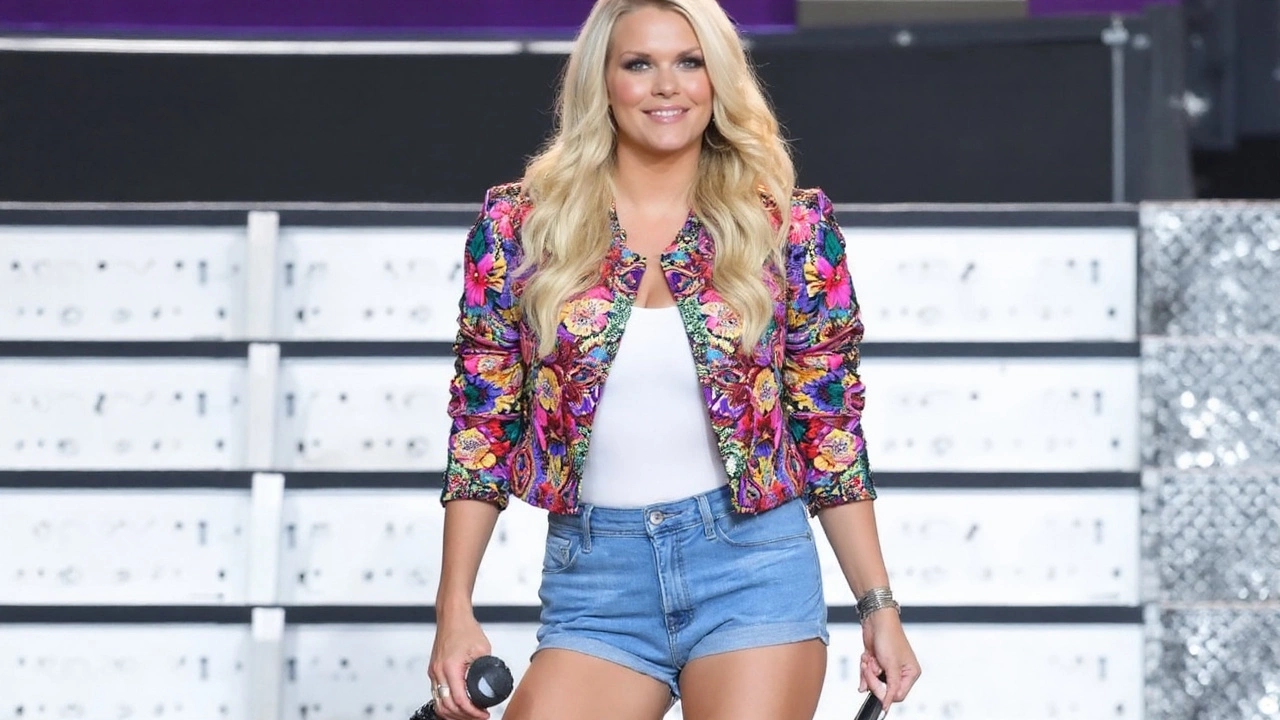Carrie Underwood reveals natural hair color after 30 years with a bronde reset

A 30-year blonde era ends with a softer, lived-in bronde
After three decades of stage-bright blonde, Carrie Underwood just pressed reset. The 42-year-old country star shared on Instagram that she’s let her natural color shine through for the first time since she was about 12, revealing a brunette-leaning bronde that swaps icy tones for warmth and depth. She thanked her Nashville colorist, gave a wink to “getting back to my roots,” and the comments lit up with surprise and praise.
For a performer whose look has been part of her brand since she won American Idol in 2005, it’s a notable shift. She’s not an Idol judge—she’s the show’s most famous alum—and that distinction matters here: her image has always traveled with her music, not the panel. The platinum era matched the high-gloss, powerhouse-vocal persona fans came to expect on red carpets and arena stages. Going bronde is a gentle course correction, not a hard left turn.
She’s talked about this before. In a 2012 Refinery29 interview, Underwood admitted she worried a dramatic darkening might make people think she’d “turned serious,” and wished she’d experimented earlier so changes wouldn’t feel jarring. She’s also been candid about youthful misfires—gelled bangs in sixth grade, a regrettable perm at 14—so this reveal tracks with someone comfortable showing the process, not just the final shot.
What exactly is “bronde”? It’s the middle lane between blonde and brown—sunny but grounded, with dimensional lowlights and a softened root. On a practical level, it grows out cleanly, is kinder to hair than constant high-lift bleaching, and plays well under stage lights and HD cameras. That matters when you’re performing, filming, and doing press in rapid cycles. For stylists, the recipe is familiar: stretch the root slightly darker, weave in warm and neutral ribbons, then gloss for shine. Maintenance drops from relentless touch-ups to strategic refreshes.
There’s also timing. The 2020s have been the age of “expensive brunette” and quietly luxe color—think the subtle, beach-washed tones long associated with Gisele Bündchen or the caramel dimension Jennifer Lopez has made mainstream. Bronde reads polished without shouting. It fits the current mood, where texture, health, and movement matter more than a single, saturated tone.
Fans reacted fast and mostly in one voice: this looks right. The warmer shade softens her features without stealing the spotlight from the music. It’s the kind of change that invites people in rather than daring them to keep up. And because it’s closer to her natural base, it pairs easily with the rest of her look—neutral makeup, earthier gowns, even denim-on-denim on a Nashville night. Stylists love colors that unlock a wider wardrobe.
The move also reflects how artists manage longevity. Images get refreshed, not discarded. A subtle pivot telegraphs confidence: no need for shock value when you can set a tone and let it breathe. For someone who’s juggled touring, recording, and motherhood, a lower-maintenance color strategy isn’t just vanity. It’s logistics—fewer hours in the chair, less stress on the hair fiber, and a look that photographs consistently across arenas, award shows, and day-to-day life.
Technically, transitioning from years of light blonde to a deeper, more natural shade takes finesse. Pros typically build in lowlights to return pigment slowly, add a shadowed root for believable depth, and use acidic glosses to seal the cuticle and amp up shine. The goal is to avoid a flat, one-note brown and instead create a gradient that reads like “born with it.” Expect periodic glosses to keep warmth in check and prevent brassiness, especially under bright lights.
Underwood’s caption—saying she hadn’t seen her natural color since childhood—lands with a mix of nostalgia and relief. It’s a line many long-time blondes understand: the upkeep becomes part of your routine until one day you question whether the mirror still matches the person. Going bronde doesn’t reject the past so much as reclaim some oxygen for the present.
There’s a media angle, too. Hair changes in pop and country can signal shifts in sound, era, or even touring cycles, but this reads more like a reset than a rebrand. It leaves room for everything—power ballads, rock-leaning sets, acoustic nights—without pre-writing a narrative. If anything, it might spotlight the vocals more by turning down the visual brightness a notch.
Expect the look to stick through photo shoots and fall events. Bronde photographs beautifully in natural light, which is why you see it on outdoor carpets and magazine covers with minimal retouching. It also plays nicely with the South’s late-summer sun and the deeper tones that show up in winter styling. In short: it’s versatile, living where most people’s hair lives naturally, just elevated.
After thirty years, the surprise isn’t that she changed—it’s how calm the change feels. No shock tactics. No dramatic reveal video. Just a post, a thank-you to the colorist, and a color that feels like it’s been waiting in the wings the whole time.